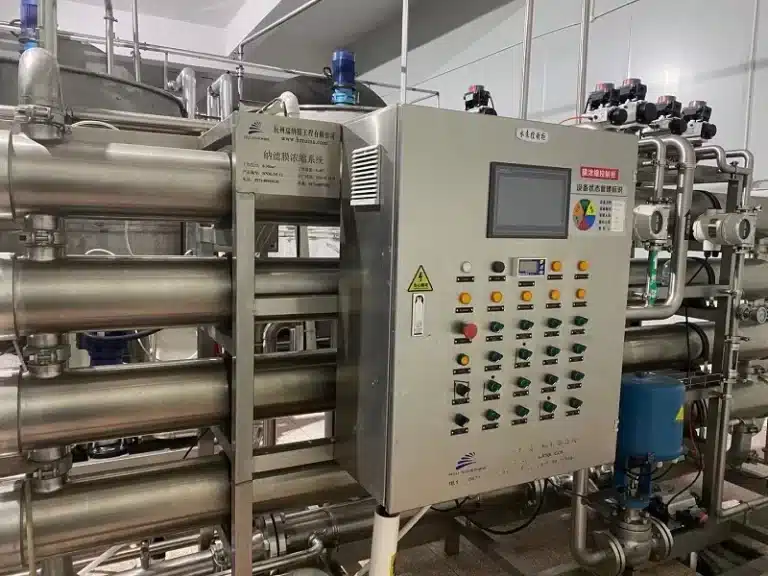
GlcNAc
Cercate una fonte affidabile di GlcNAc (N-Acetil-Glucosamina)? Gensei fornisce polvere di n-acetil glucosamina di prima qualità adatta a un'ampia gamma di applicazioni, tra cui integratori alimentari e cosmetici. La nostra N-Acetil-Glucosamina è prodotta in base a rigorose misure di controllo della qualità per garantire purezza ed efficacia. Sia che stiate producendo un integratore di N-acetil glucosamina per il supporto delle articolazioni, sia che lo stiate incorporando nei prodotti per la cura della pelle per le sue proprietà idratanti e rinnovatrici, la nostra polvere di GlcNAc è la scelta ideale. Collaborate con Gensei per le vostre esigenze di N-Acetil-Glucosamina e approfittate della nostra qualità costante e dei nostri prezzi competitivi.
Si prega di notare: Siamo un fornitore all'ingrosso e abbiamo quantità minime d'ordine.
Avete domande su questo prodotto? Il nostro team è qui per aiutarvi. Per richieste relative a più ingredienti, utilizzare l'opzione Contatto e includere l'elenco degli ingredienti nel messaggio.
N-Acetil-Glucosamina Numero CAS: 7512-17-6
Nome chimico: N-acetil-D-glucosamina
Sinonimi:
- GlcNAc
- N-acetilglucosamina
- 2-(Acetilammino)-2-deossi-D-glucosio
Numero CB: CB7669586
Formula molecolare: CH₁₅NO₆
Peso molecolare: 221,21 g/mol
Numero MDL: MFCD00069869

🔬 Processo di produzione della N-Acetil-Glucosamina (GlcNAc)
La **N-Acetil-Glucosamina (GlcNAc)** è un amminozucchero chiave prodotto attraverso la **acetilazione** della **Glucosamina** per formare il composto finale biologicamente attivo.
*Nota: il GlcNAc è una forma stabile dello zucchero amminico che funge da elemento costitutivo dei carboidrati complessi, tra cui l'acido ialuronico** e il condroitin solfato**.
I nostri impianti di produzione all'avanguardia
Esplorate le nostre moderne strutture dotate di tecnologie avanzate per garantire la massima qualità nella produzione di vitamine, estratti di erbe, minerali e aminoacidi.











Domande frequenti
La N-Acetil-Glucosamina (GlcNAc) offre diversi potenziali benefici, tra cui il sostegno alla salute delle articolazioni contribuendo alla sintesi dei componenti della cartilagine, la promozione della salute della pelle aiutando l'idratazione e riducendo l'iperpigmentazione, e potenzialmente il sostegno alla salute dell'intestino.
Il GlcNAc può apportare benefici alla pelle aumentando l'idratazione, riducendo la comparsa di linee sottili e rughe e contribuendo a uniformare il tono della pelle inibendo la produzione di melanina. Si trova spesso nei prodotti per la cura della pelle che mirano a migliorarne la consistenza e la luminosità.
No, la N-Acetil-Glucosamina (GlcNAc) è un derivato della glucosamina. La glucosamina è un aminozucchero, mentre il GlcNAc si forma quando un gruppo acetilico viene attaccato alla molecola di glucosamina. Entrambi favoriscono la salute delle articolazioni, ma il GlcNAc ha anche notevoli benefici per la salute della pelle.
Sì, la N-acetilglicosamina è uno zucchero riducente perché ha un gruppo aldeidico o chetonico libero che può ridurre altre sostanze.
Il glcNAc è utilizzato negli integratori alimentari per favorire la salute delle articolazioni e ridurre i sintomi dell'osteoartrite. Viene anche utilizzato nei prodotti per la cura della pelle per le sue proprietà idratanti, anti-invecchiamento e illuminanti. Inoltre, è oggetto di ricerca per il suo potenziale ruolo nella salute dell'intestino.
La N-Acetil-Glucosamina è generalmente considerata sicura per la maggior parte delle persone quando viene assunta alle dosi raccomandate. Tuttavia, i soggetti allergici ai crostacei devono prestare attenzione, poiché una parte della glucosamina deriva dai crostacei. In alcune persone possono verificarsi lievi effetti collaterali gastrointestinali. È sempre meglio consultare un professionista della salute prima di iniziare un nuovo integratore.
La N-acetil-D-glucosamina (GlcNAc) svolge diverse funzioni nell'organismo. È un precursore dell'acido ialuronico, un componente chiave del liquido sinoviale delle articolazioni e una delle principali molecole idratanti della pelle. È anche un elemento costitutivo dei glicosaminoglicani e delle glicoproteine, essenziali per la formazione della cartilagine, la segnalazione cellulare e la funzione immunitaria. Nell'intestino, può contribuire a sostenere il rivestimento del muco.
Sì, la N-Acetil-Glucosamina può aiutare a schiarire la pelle inibendo la produzione di melanina, il pigmento responsabile del colore della pelle. Questo può portare a una riduzione dell'iperpigmentazione, come macchie scure e tono della pelle non uniforme.
Il glcNAc non si trova in quantità significative nella maggior parte degli alimenti comuni. Tuttavia, è un componente della chitina, presente nell'esoscheletro di crostacei (come gamberi, granchi e aragoste) e insetti. Anche alcuni funghi contengono chitina. Le fonti alimentari sono limitate, per questo motivo viene spesso assunto come integratore.
La parte "N-acetil" di N-Acetil-Glucosamina si riferisce all'aggiunta di un gruppo acetilico (CH₃CO) alla molecola di glucosamina. Questa acetilazione modifica la glucosamina e le conferisce proprietà uniche. Nell'organismo, questa modifica permette alla GlcNAc di essere incorporata in varie molecole importanti come l'acido ialuronico e i glicosaminoglicani, contribuendo alla salute delle articolazioni, all'idratazione della pelle e ad altri processi biologici.
Non esiste un sostituto diretto della N-Acetil-Glucosamina, in quanto ha funzioni uniche. Tuttavia, a seconda del beneficio desiderato, si possono utilizzare altri composti. Per la salute delle articolazioni, le alternative più comuni sono la glucosamina solfato o la condroitina solfato. Per l'idratazione della pelle si possono utilizzare l'acido ialuronico o altri ingredienti idratanti. È meglio consultare un professionista della salute per determinare l'alternativa più appropriata in base alle proprie esigenze specifiche.

